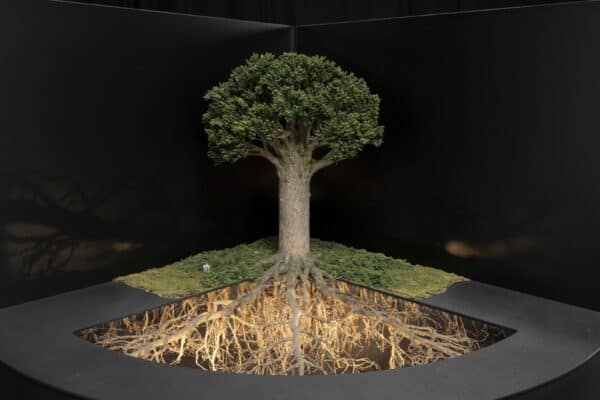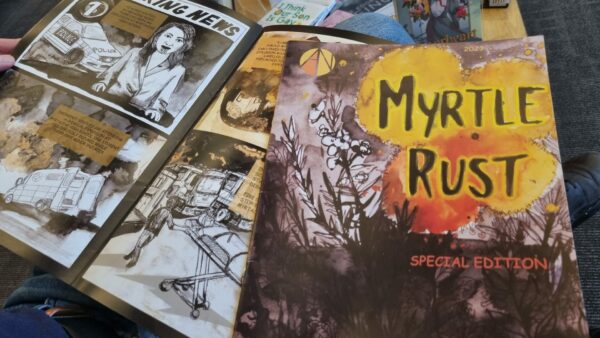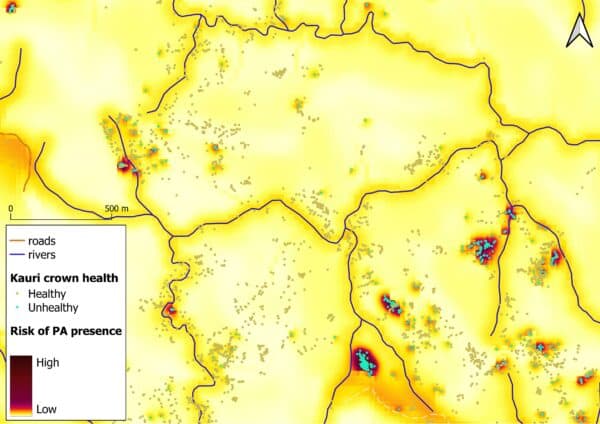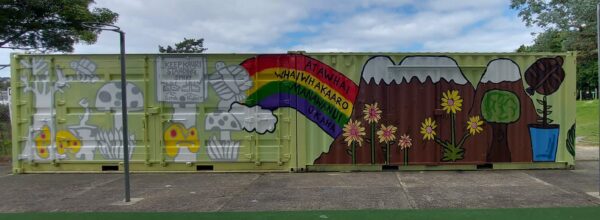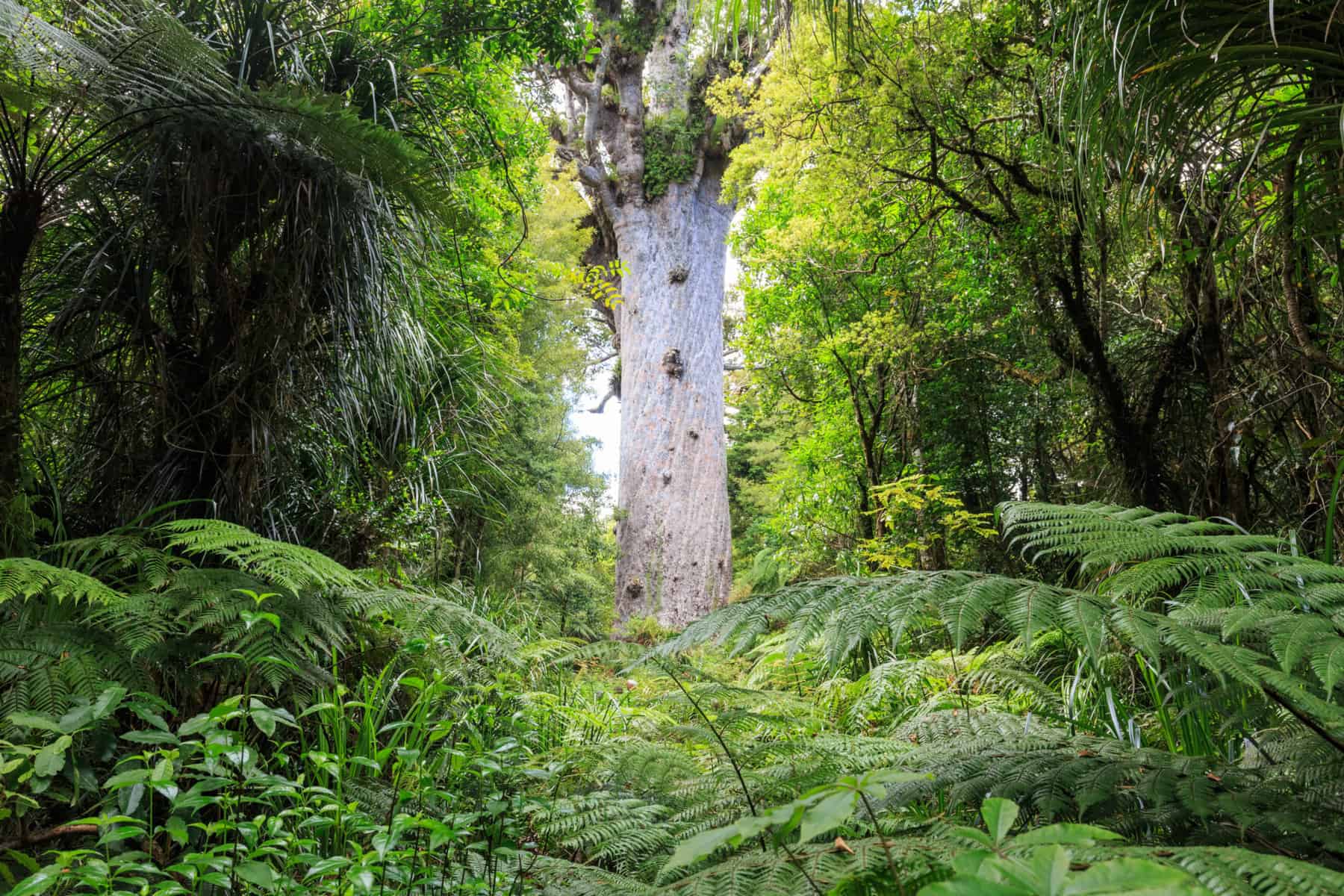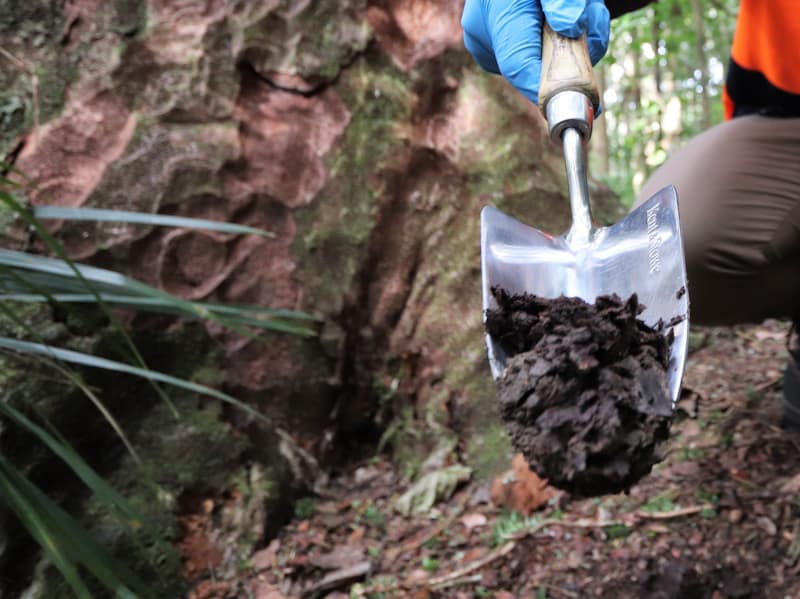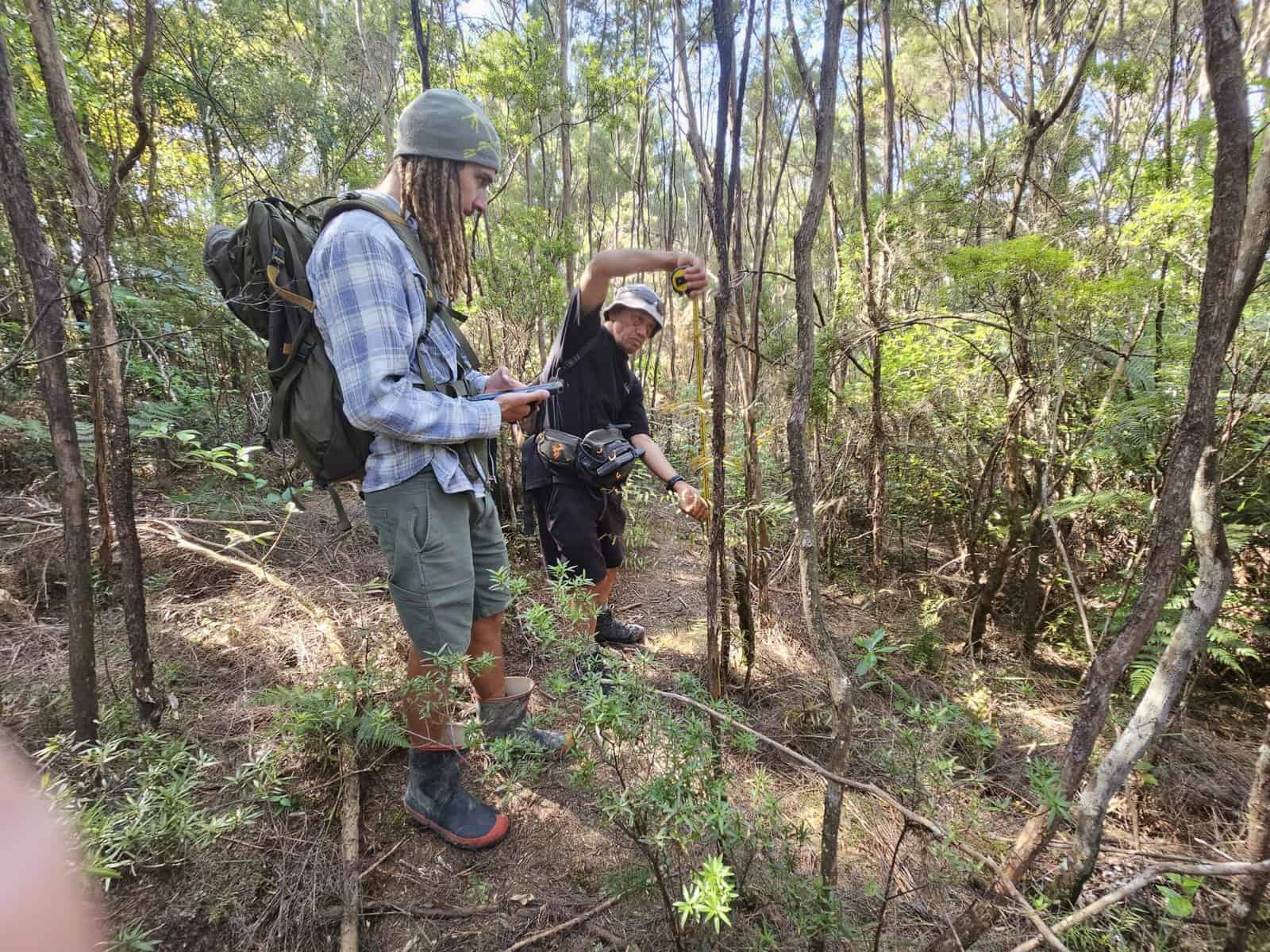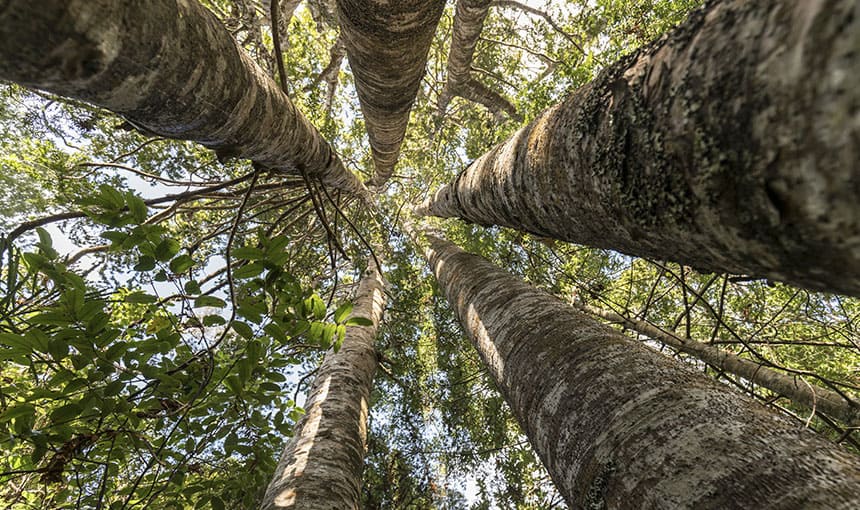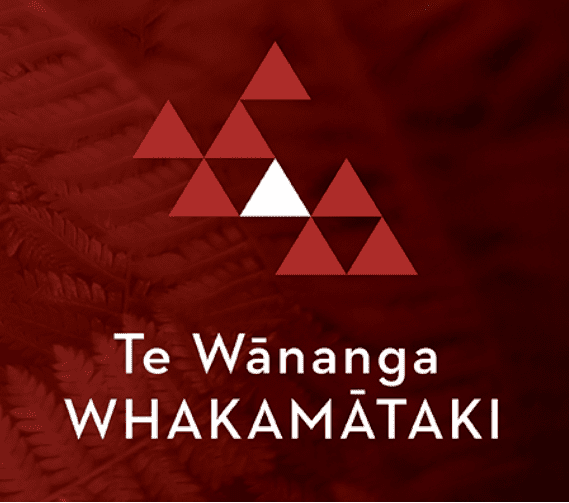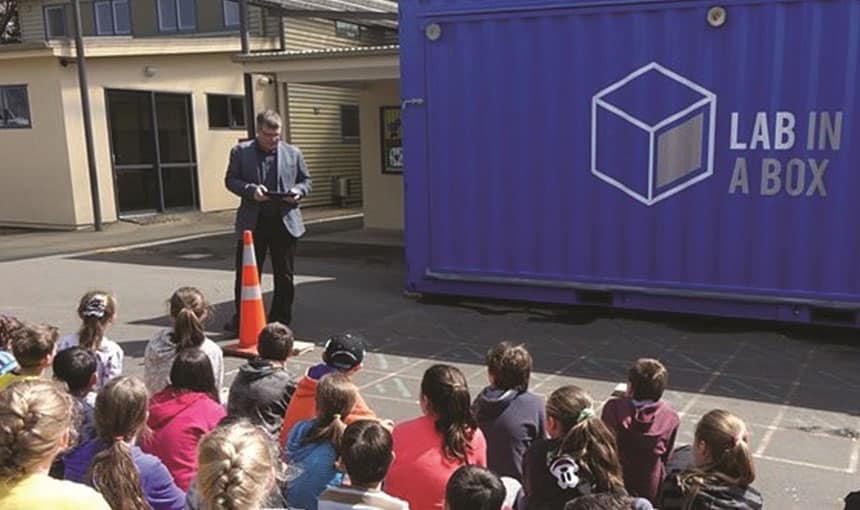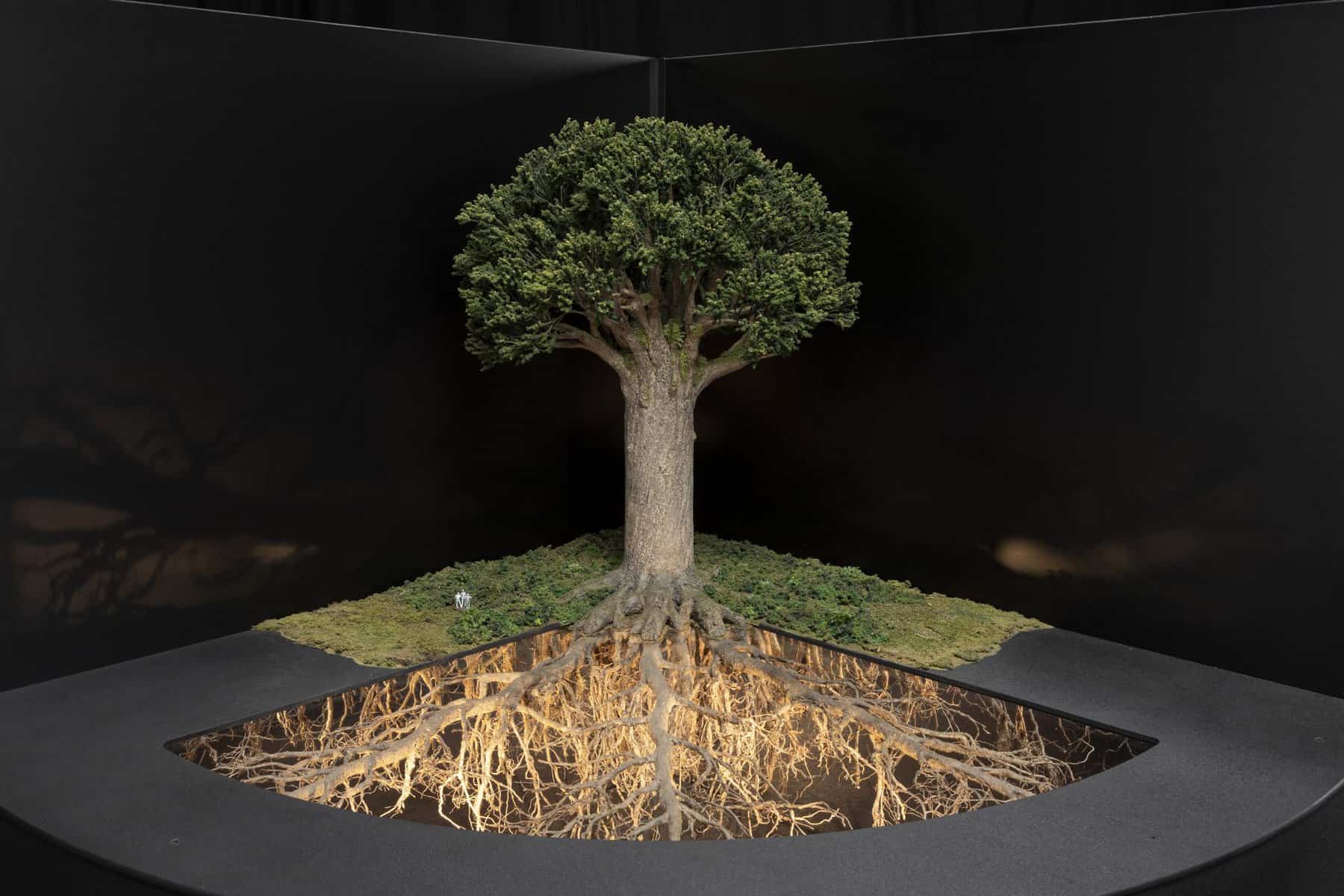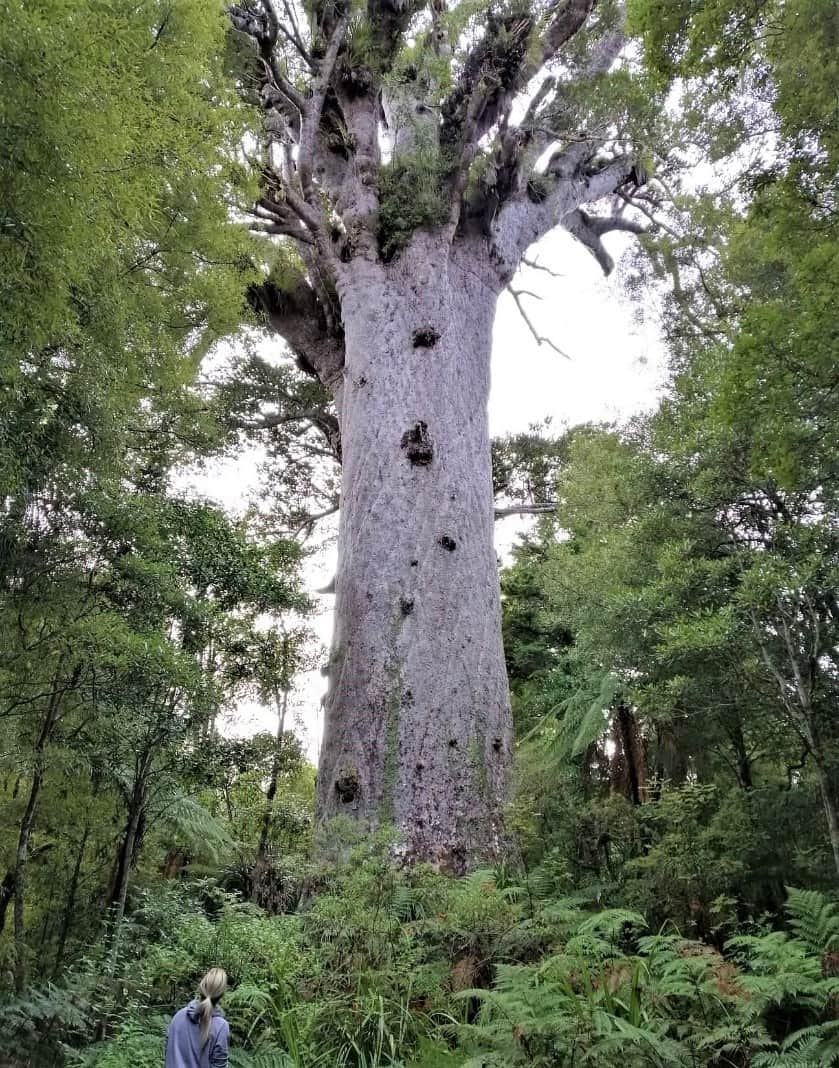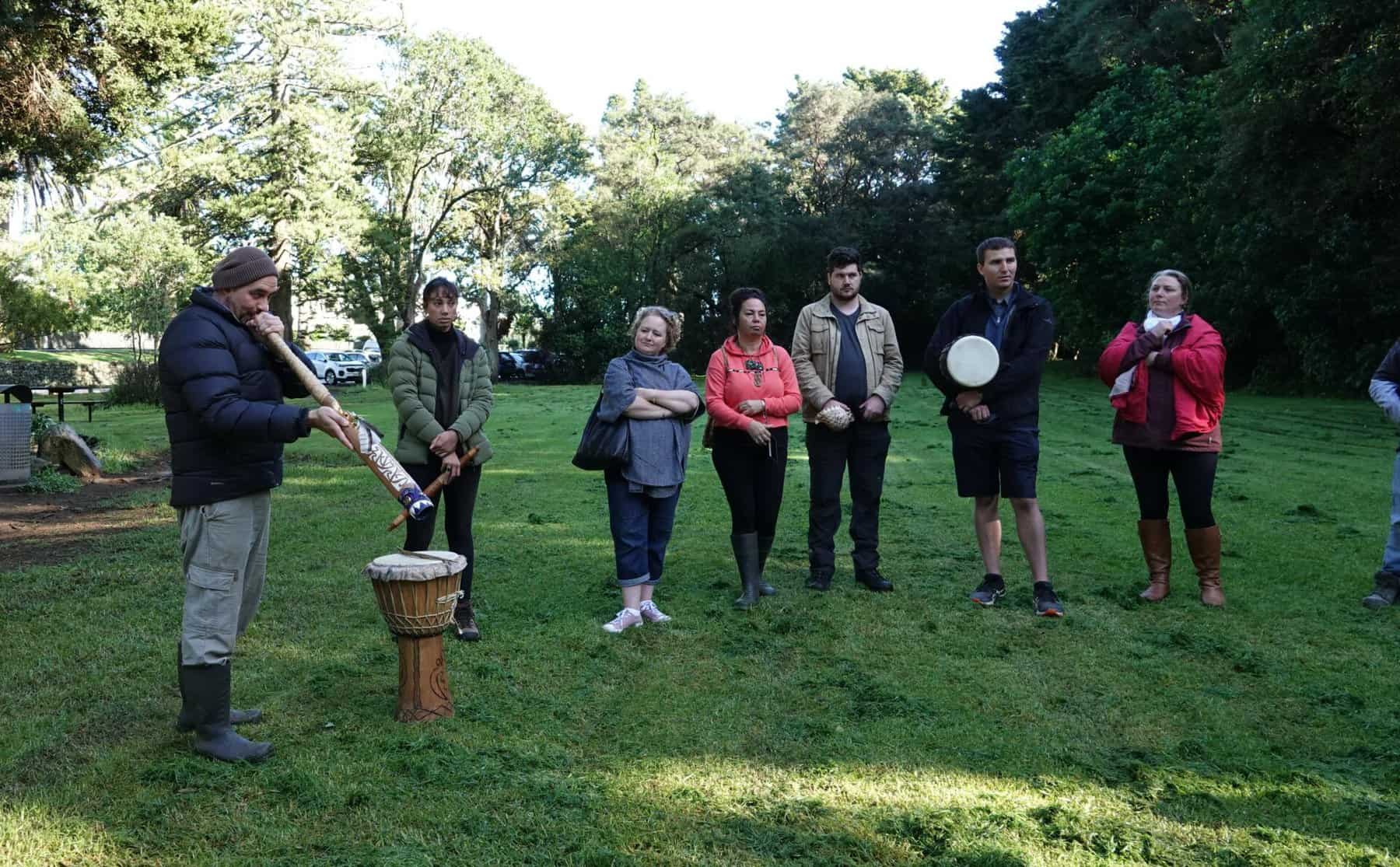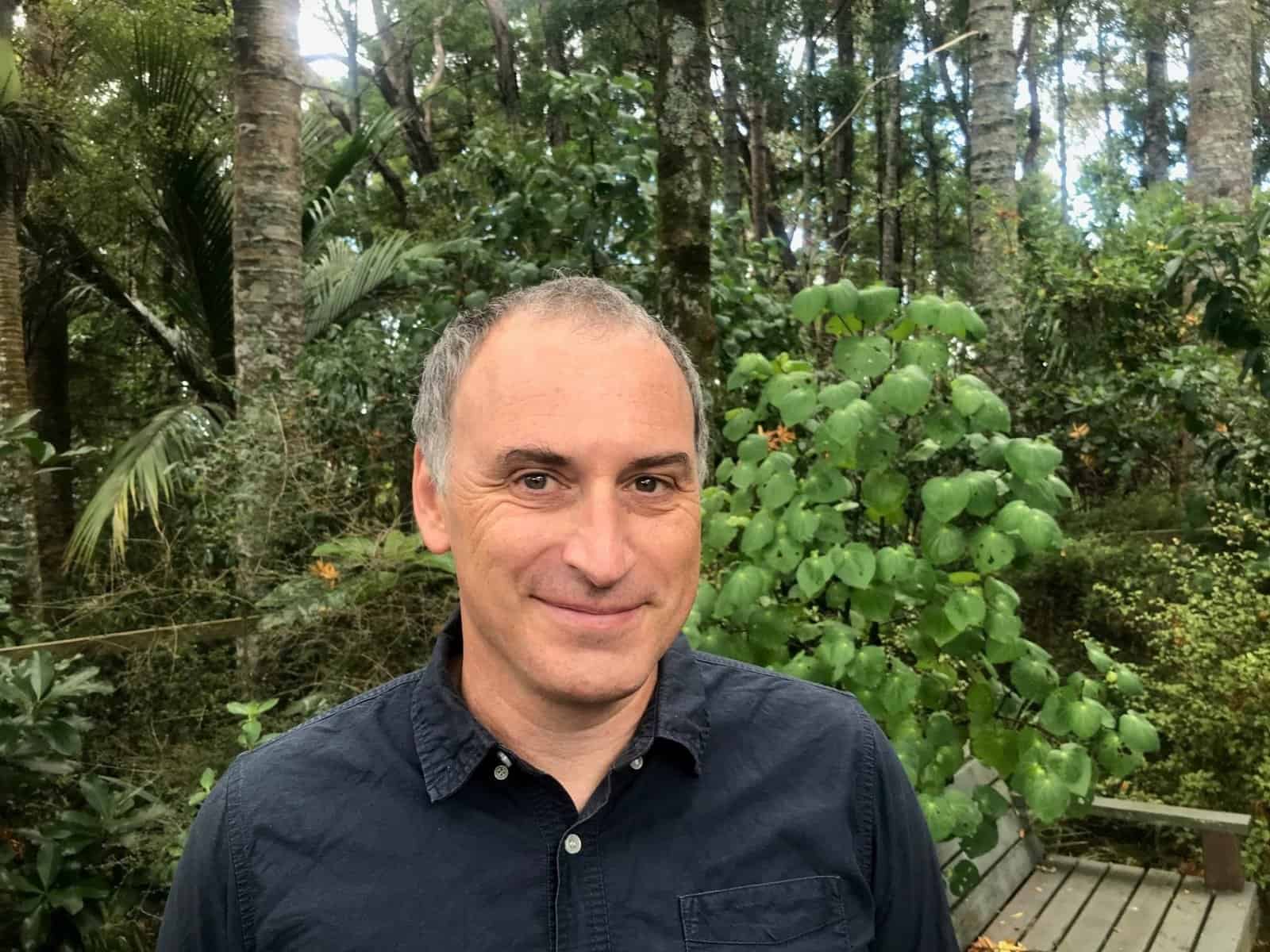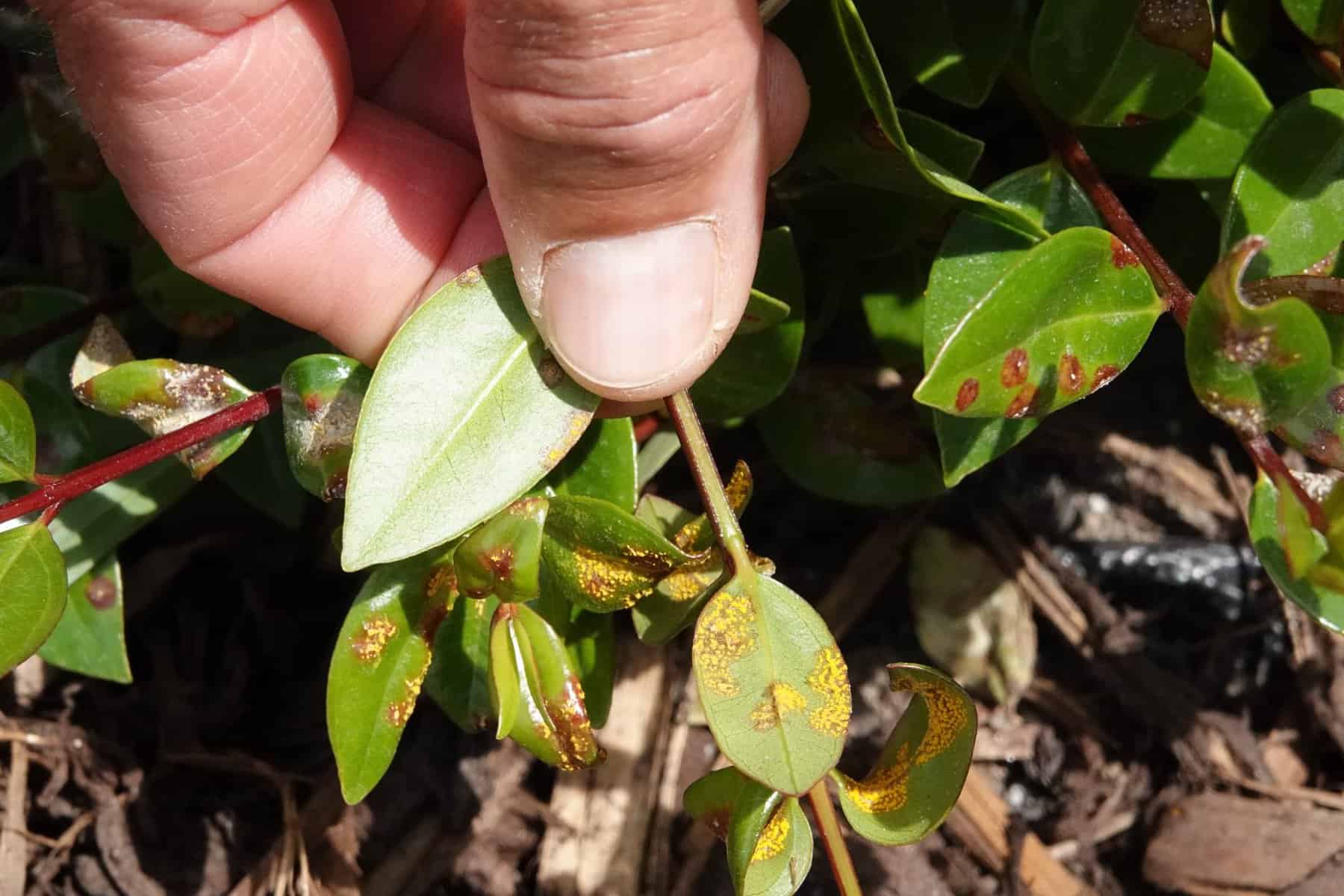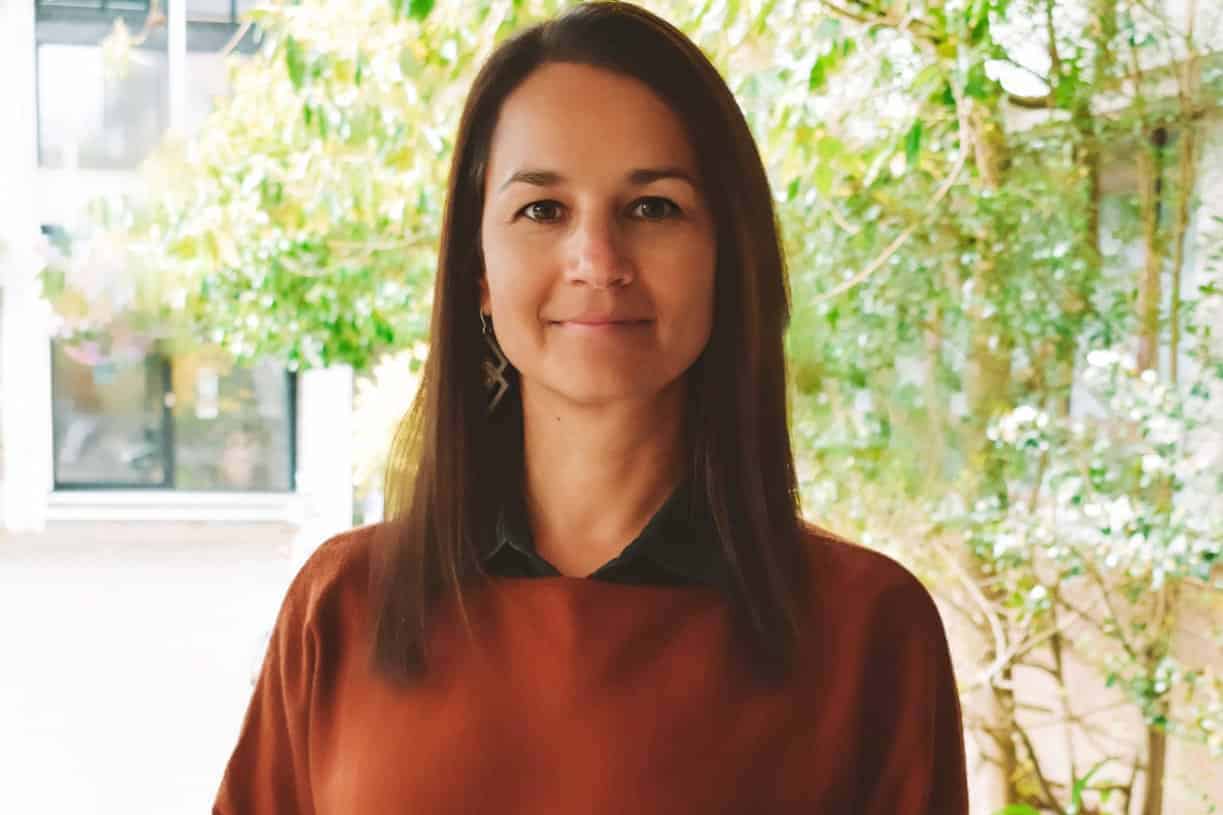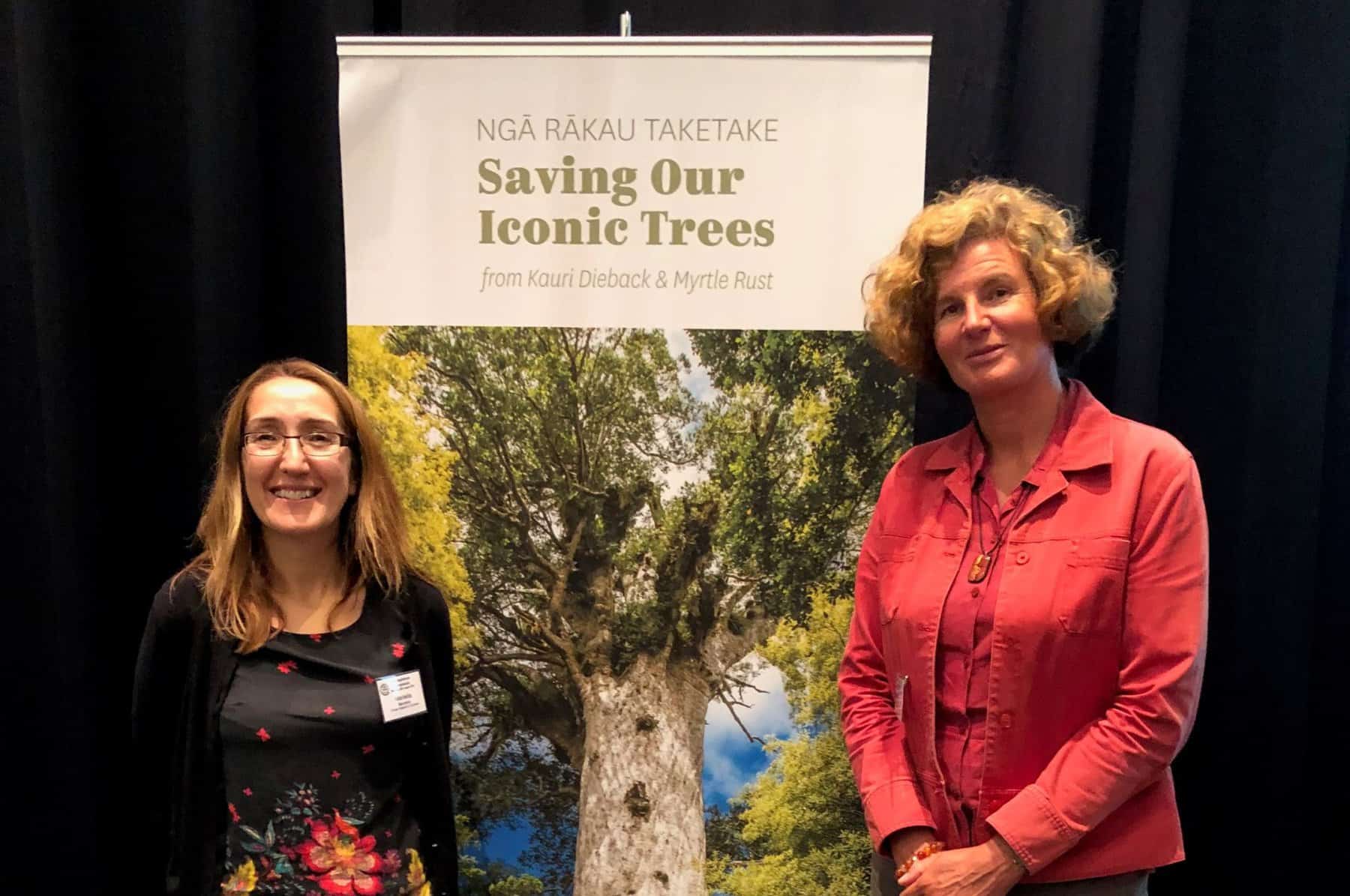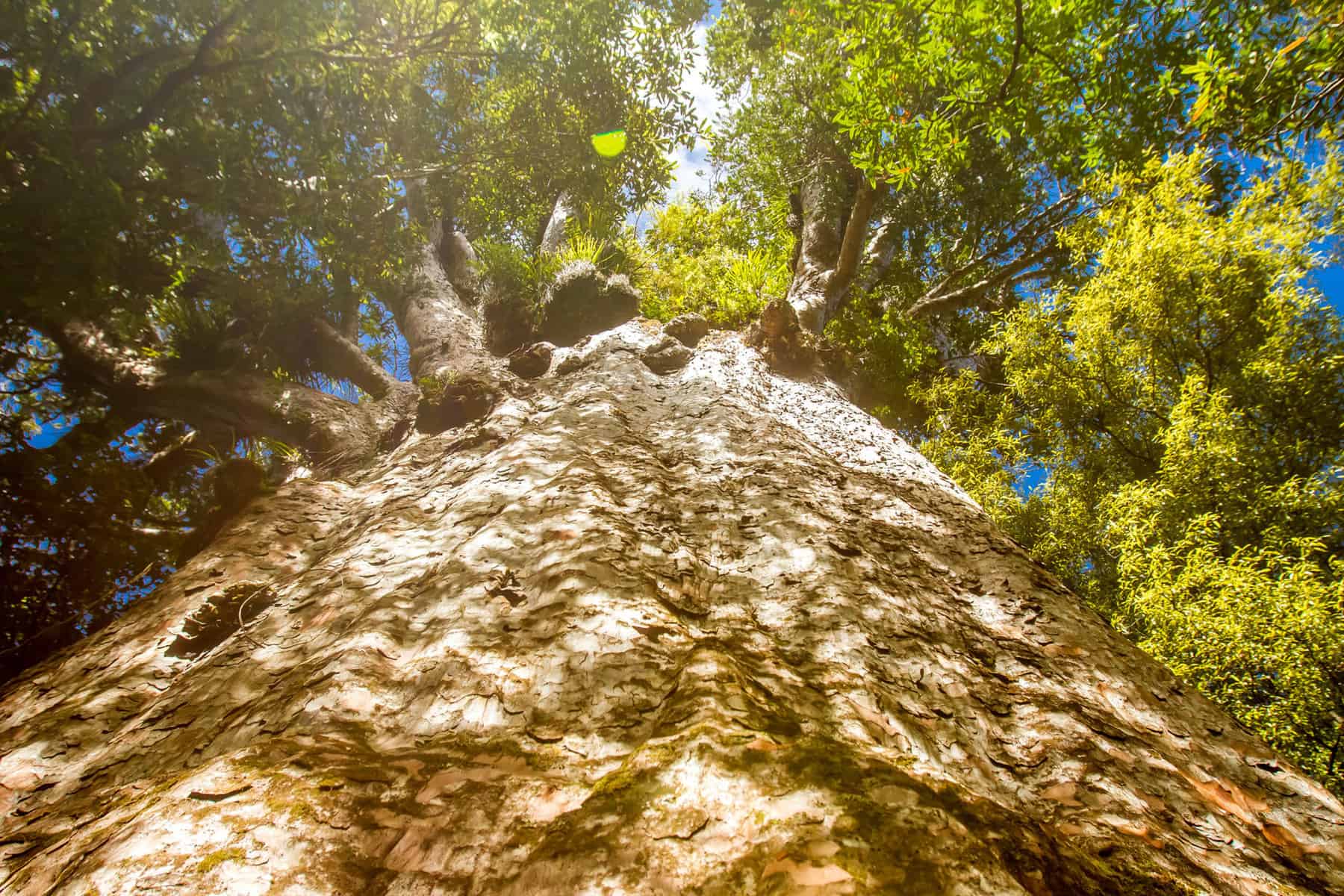Risk Assessment & Ecosystem Impacts 2022
We need to understand kauri dieback and myrtle rust better if we want to protect our ngahere. That’s why the goal of the ‘Risk Assessment…
Walking, Sensing, Knowing: An Ethnography on Foot Around Forest Biosecurity Interventions in Te-Ika-ā-Māui
Walking has gained prominence in social sciences as a source of inspiration for scholarly narratives and methodological experimentation with embodied ways of knowing. Walking across…
Neoliberal Knowledge Production in Aotearoa New Zealand: Confronting Kauri Dieback and Myrtle Rust
The detection of kauri dieback and myrtle rust pathogens in Aotearoa|New Zealand prompted the government to fund research and engagement into what has been constructed…
Disease Narratives and Artistic Alternatives
The dominant colonial scientific narrative of managing disease is one of risk, response, and control. This narrative, while shifting, continues to frame the priorities and…
Te Mauri o te Kauri me te Ngahere: Indigenous Knowledge, te Taiao (the Environment) and Wellbeing.
Ko te kauri he rākau rongonui, he rākau rangatira puta noa i Te Tai Tokerau. The kauri (Agatha australis) is a chiefly tree that represents…
Why understanding the biology of Phytophthora agathidicida matters – Jochem Vink
Presented as part of the Kaurilands Summit 2023, hosted by Ngā Rākau Taketake. To find out more about the Control, Protect, Cure research theme…
Indigenous Biosecurity: Māori Responses to Kauri Dieback and Myrtle Rust in Aotearoa New Zealand
It is widely acknowledged that Indigenous peoples have traditional knowledge relevant to modern environmental management. By asserting roles within associated science and policy networks, such…
Te Whakahononga – Episode 1
Te Whakahononga led a new approach to scientific research aiming to ensure equitable status for mātauranga Māori alongside western knowledge, and mana whenua with researchers…
Ngāti Rēhia: Ngā Rākau Taketake Summary Report
An ArcGIS storymap created by the Ngāti Rēhia Biodiversity Management Area documenting the research mahi delivered through Te Whakahononga Pou and funded by Ngā Rākau…
Te Honongā Kawanatanga Māori – Rotorua & Hamilton
This document is a report outlining engagement with Te Papa Atawhai (Department of Conservation) kaimahi Māori staff following a wānanga held in Hamilton and Rotorua…
What is Seed Banking
A video created by Rhiannon James Graphic Recording for NRT’s Oranga Theme and can also be found on the Te Tira Whakamātaki website here: https://www.ttw.nz/whare-taonga
Kaurilands Summit 2021
Over 120 attendees representing community groups, iwi, research organisations, councils and government agencies came together online for the inaugural Kauriland Summit in June 2021. The…
